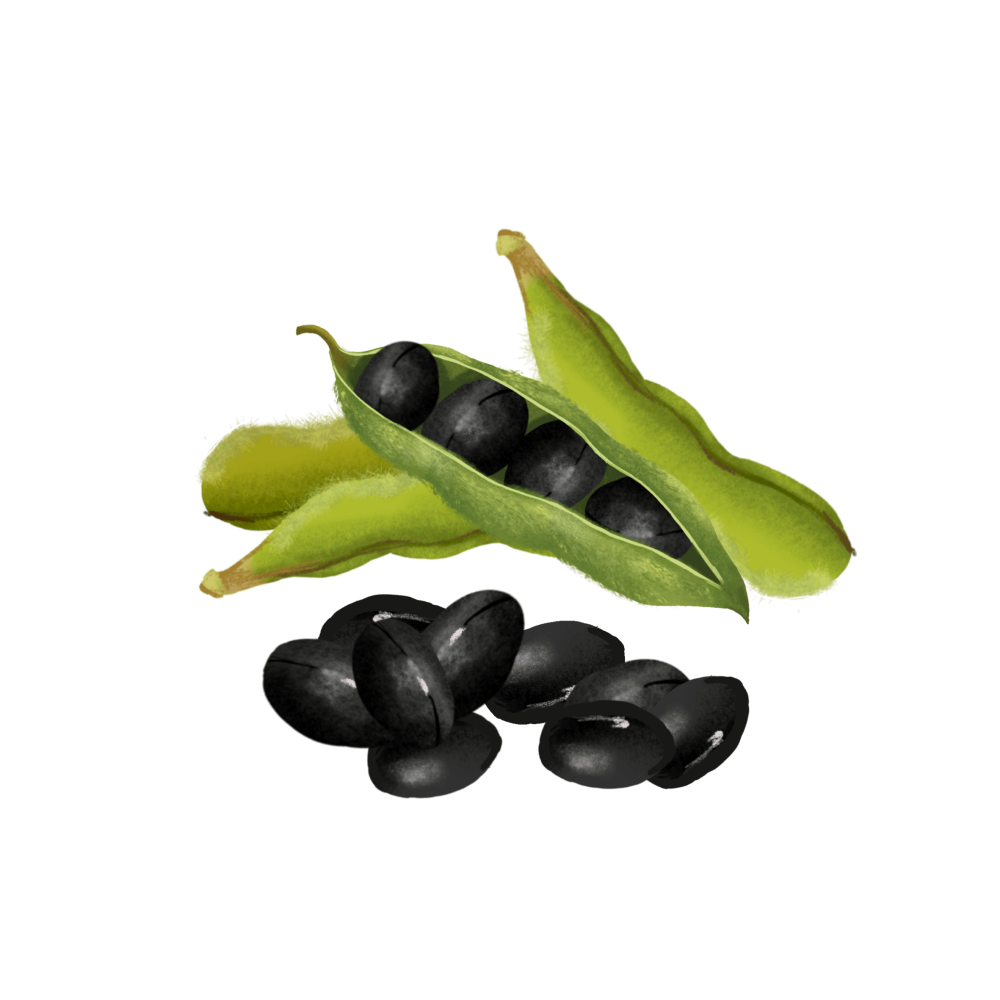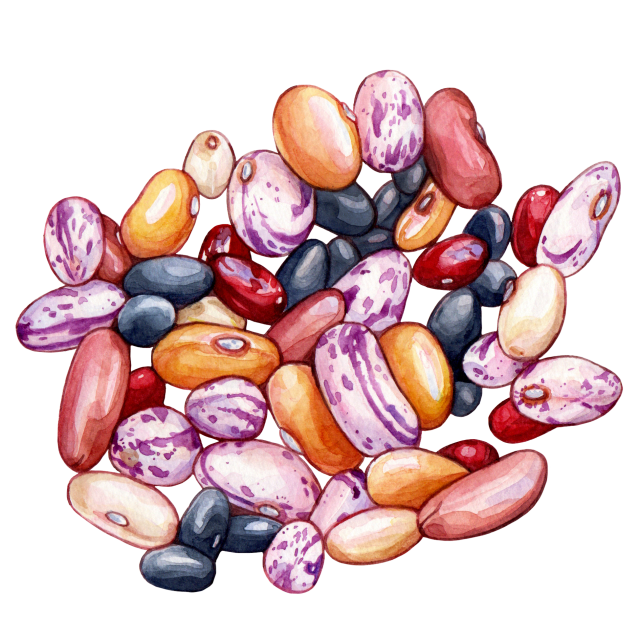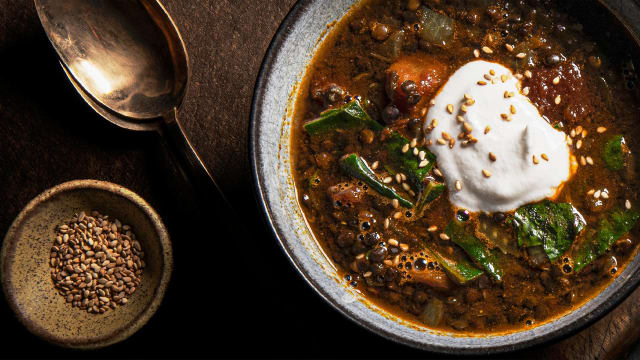Black Soybean

Latin name: Glycine max (L.) Merr.
Other names: Kala Bhatt (India), Hei Dou (China), Kuromame (Japan)
Uses: pulses, medicinal
Considered relatively rare among soybean varieties, these shelling beans with black seed coats are a degree sweeter and more flavorful than the more common yellow varieties. The smaller black soybeans are also easier to cook, and find mention in the annals of ancient food systems in China, Japan, Korea, Indonesia, and northwestern India, in both dried or fermented form.
Why is black soybean healthy?
Dried black soybeans are high in proteins, essential amino acids, dietary fiber, vitamins, minerals, and anthocyanins. The beans are also rich in polyphenols, which may improve vascular function by reducing blood pressure. The beans are integral to many ethnomedicinal recipes. In Kumaon, India, bhatt ka jaula – unsalted black soybeans cooked with rice – is a preferred convalescent food, particularly for those suffering from jaundice.
What does black soybean taste like?
Black soybeans have a buttery texture and a rich, nutty flavor with a slight sweetness.
Where does black soybean grow?
Wild black soybeans originated in Asia, with the earliest known mention of their cultivation dating to 1700-1000 BC in China, during the Shang Dynasty. Black soybeans are grown for food, ethnomedicine, and fodder mainly by rural communities in China, Japan, Korea, and Indonesia. Traders along the silk route helped spread the cultivation into the Himalayan regions and parts of central India.
How do I prepare black soybean and what do I pair it with?
As with all dried beans, soak the pulses overnight before cooking. Boil the beans, season with salt and pepper, and eat as a snack, or toss them into salads and fillings for wraps. Like black turtle beans, they can be pureed to a thick paste, seasoned, and fashioned into patties. For stews and soups, cook the beans with pungent foods such as ginger and garlic in sesame or mustard oil. For a hit of umami, cook the beans with dried mushrooms or bamboo shoots. Or pair with squash and greens.
In China, the most popular culinary use is as douchi, a fermented condiment that is added to many dishes. Black soybeans are also common in sweet and savory dishes in Korea and Japan. In the kitchens of Uttarakhand, where they are called bhatt, black soybeans are cooked as a lentil stew with an aromatic tempering.
Surprising fact:
In 1972, archaeologists in China's Hunan province unearthed a Han Dynasty tomb. Among the cache of silk fabrics, pottery, lacquerware, and medical writings were well-preserved food items from over 2000 years ago, including a banquet table with fruit, rice cakes, pickles, and box of douchi, fermented black soybean paste.




